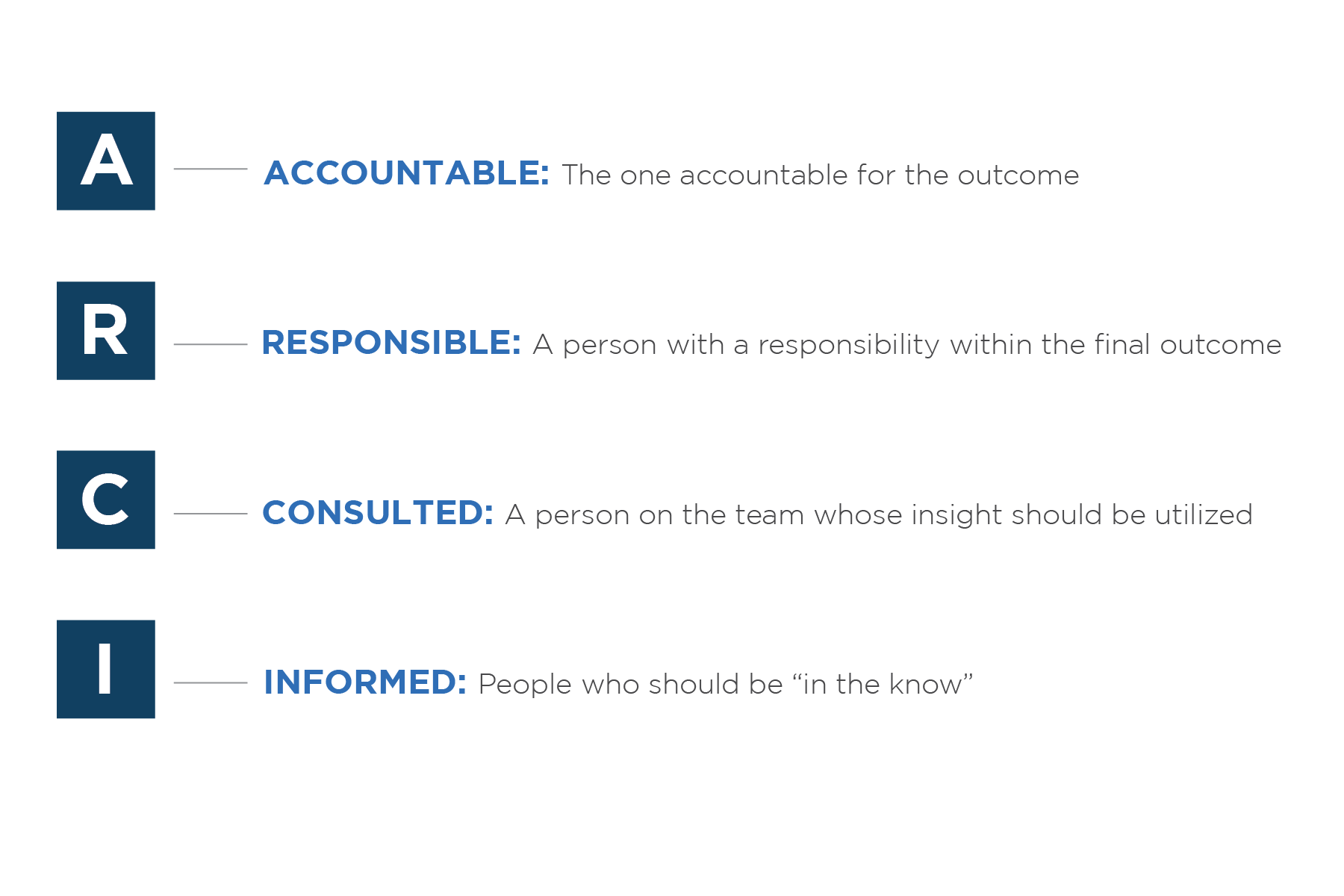Our executive pastor introduced the “ARCI” framework to me and has operationalized it within our team—so much so that the question “Who has the A?” is a common one among leaders I serve alongside.

What I Appreciate About the Framework
It helps solve a major problem—the lack of clarity around roles and responsibilities when leaders from different departments come together. According to research, execution often suffers in organizations because people fail to collaborate horizontally. After interviewing thousands of employees, researchers found that execution is a struggle because teams fail to work together horizontally—not because they fail to work together vertically. You have likely seen it: a team that consistently works together in one department is able to execute, but when teams across the organization come together without a clear leader, there can be lapses in execution. This is a problem because the big goals an organization has never involve only one team. Because major projects and initiatives always involve multiple teams, clarity around roles and responsibilities is important.
How to Use the Framework
- The person with the “A” is the person accountable for the entire project—the person who has the authority and who owns the results, the communication, and the overarching plan. One person has the “A.”
- A person with an “R” has a responsibility within the project or the initiative. Often someone with an “R” does not work for the person with the “A” on a daily basis but follows the lead of the “A” for the specific project. In theory, if every person with an “R” fulfills their responsibility within the project, under the leadership of the person with the “A,” then the project or goal or plan is successful.
- A person who is a “C” is typically a subject matter expert on one part of the plan, and the person with the “A” is wise to seek his or her counsel.
- Finally, there are people who should be in the know (the “I”s) so they are not surprised by the plans and can offer support.
How This Framework Has Helped Me
The framework has helped (1) bring clarity, (2) foster development, and (3) ensure those with valuable insight are included.
- Bring clarity: When I was a child, my dad assigned chores by putting my name or my brother’s name on a day on the calendar hanging in the kitchen—one name on trash days and one name on lawn mowing days. When I asked, “Why do our names need to be here? Why can’t it just be both our jobs?” My dad responded with, “If it is everyone’s job, it is no one’s job.” Having clarity is really helpful.
- Foster development: Because I believe that the work itself does the majority of development, giving an emerging or young leader the “A” over a project or goal or initiative is one way to help develop the person.
- Ensure people are included: Only one person can have the “A,” but there are people with experience, insight, and expertise that need to be consulted. This framework helps ensure they are included.






